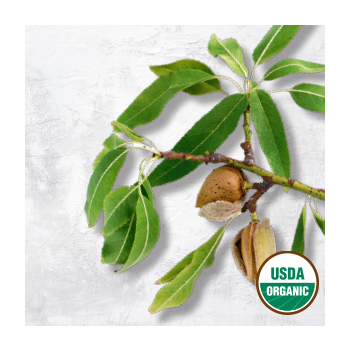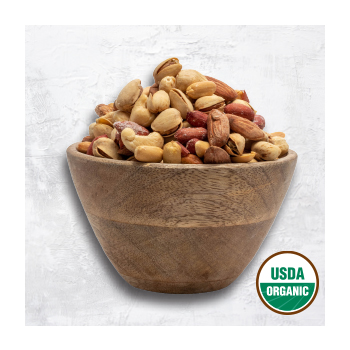


Sign-up for {N}power to get exclusive discounts, newsletters, members-only features, and more!
 Denver - Design District - Alameda and Broadway
Denver - Design District - Alameda and Broadway
368 S Broadway
Denver, CO 80209
United States
 Preferred Store:
Select a Store
Preferred Store:
Select a Store

Roasted, toasted, and turned into butter — by the handful, or by a jar, there are oodles of varieties and ways to enjoy nuts. A handful of crunchy roasted almonds, or walnuts sprinkled over a bowl of oatmeal, a peanut butter sandwich, or trail mix to fuel your adventures. Loaded with heart and brain-loving nutrients like protein, omega-3 fats, vitamin E, and fiber, they’re a small snack with big benefits. Go ahead… go nuts!

A tough nut to crack: what do polyurethane foam, jet fuel additives, and conventional raw almond processing have in common? The answer: propylene oxide (PPO), a highly hazardous clear liquid that does not occur naturally in the environment. In the early 2000s, there were several outbreaks of Salmonella that were traced back to almonds. Soon after, the USDA implemented a requirement to pasteurize the nuts by either using steam or fumigating with PPO.1 Most large, conventional nut producers use PPO and because it’s used as a processing agent, it’s not required to be listed as an ingredient. But this need nut be, organically produced almonds use steam and never PPO to pasteurize, and for good reason! The Centers for Disease Control notes the carcinogenic effects of PPO, and it’s been shown to have damaging effects on DNA synthesis.2 It’s even been banned from use as fuel additive by the National Hot Rod Association for being too dangerous.3 We’ll stick with the organic almonds, please!
California grows 80 percent of the world’s almond supply, and they are the most highly pesticide-sprayed crop in the state.4 Yikes! Unfortunately, it’s not just almonds but pistachios, cashews, pecans, and walnuts too; they are all heavily sprayed in conventional farming. Just when you thought it couldn’t get any nuttier… one of the most insidious pesticides, glyphosate (found in Roundup), is also used on conventionally produced nuts. Glyphosate is not only classified as a carcinogen by the Environmental Protection Agency and known to impact fertility and interfere with mineral uptake of plants (including the crops we eat), but it’s also detrimental to bee populations. It throws bees’ microbiomes out of whack, negatively impacts their ability to reproduce, thermoregulate, and even their capacity to forage and navigate.5 6 Nuts depend on bees for pollination to grow! Choosing organic is better for everyone along the food chain, from the bees and farm workers, to you and your family.

Nuts are rich with nutritious oils—it’s part of what gives them their heart-healthy and brain-loving benefits. Because of this, nuts are also prone to going rancid. Rancid oils can wreak havoc on the body, wearing it down with oxidation; thus, it’s always best to keep nuts in the fridge, as the cooler temperatures slow the rancidity process.7 Keep ‘em fresh, keep ‘em cold, and keep ‘em coming!
Note: Natural Grocers requires all its organic and non-organic bulk almonds and the almonds used for freshly ground almond butter be steam pasteurized or pasteurized via roasting—never PPO fumigation!

Sweet and a little salty with lots of crunch, these bars transform good4u nuts into a delicious dessert or healthy snack for all your physical activities. They are easy to make, only require a few ingredients, and store well for your adventures. The bars are delicious without the chocolate too, so feel free to leave it off if you prefer.



Sign-up for {N}power to get exclusive discounts, newsletters, members-only features, and more!
